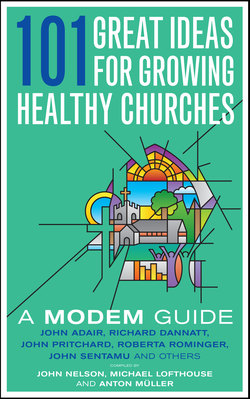Читать книгу 101 Great Ideas for Growing Healthy Churches - John Nelson - Страница 18
На сайте Литреса книга снята с продажи.
ОглавлениеGreat Idea 8: Be About Your Father’s Business – Part 2
PHILIP DOWN
Who then is the faithful and prudent manager? Blessed is that slave whom his master will find at work when he arrives. Truly I tell you he will put that one in charge of all his possessions
Luke 12.42–44
Top Tip: It is necessary to improve the disaggregation of every element of the organization’s life until you can see the issues clearly enough for either celebration or reform.
Business Perspective: Successful organizations understand that they are first and foremost a business where profit and loss is equivalent to life or death.
In the business and commercial world a production model disaggregates the various complex steps into more fundamental elements for measurement, refinement and development. This enables the manager to understand successes, to treat failures and to overcome risks.
How might the church, as an organization interested in producing certain outcomes, be able to disaggregate the elements of its own organizational life into more recognizable fundamental elements?
It might just help church leaders manage change better and be more productive in their common life with respect to desired outcomes (see Figure 2).
Under the scrutiny of disaggregation we are faced with a number of challenges by such a materialist model.
In the commercial world it is relatively simple to work backwards through the linear model from the desired outcome to establish what is required in the other parts of the organization. For example, how many widgets need to be produced and how, for which customer and in what time frame to produce a profit?
This is not so simple for the church leader as we tend not to be driven by the concept of profit. Instead of talking about profit we can talk about a fruitful and productive church where we find that ‘ministry’ is a desired outcome while simultaneously being an input, a process, an output and the key to the market!
Therefore in terms of disaggregation we need a deeper level of understanding in respect of each part of the model. Consequently ministry as an ‘input’ might be the conduct of a wedding or some other occasional office.
Ministry as an output might be the married couple not only being married but being cared for pastorally by the church. Ministry as a process would be the actions by which such care has been shown to the couple by the church.
Ministry as a marketing operation would be the marriage leaflets produced by the church which describe such care, although the act of showing such care is perhaps the strongest sales pitch to the market and is to do with relationship. The desired outcome is ‘ministry’ as a relationship fulfilled in marriage and supported by the church both as agent and caring friend.
It is necessary to improve the disaggregation of every element of the organization’s life until you can see the issues clearly enough for either celebration or reform.
Perhaps our best advantage in reflecting on the life of the church in this way is to be reminded constantly of the purpose(s) of the church by which the remainder of the model must be judged and, where necessary, reformed. Conformity to purpose will drive the engine of production in all its parts. Purpose gives energy!
Such purpose needs to include: the worship of God, and the love of neighbour.
The church, in today’s world, has great challenges in the areas of ‘process’, ‘outputs’ and ‘marketing’. This is the world where fresh expressions of church may be able to help and where more traditional elements will have a place but may need to be reformed. It is here that a disaggregated management model will help.
Ultimately the Spirit of God will use the faith and practice of the church as God needs but there is an abiding task for the disciples of Jesus and the family of Christ and that is to be mindful of the life of the Spirit and the calling of God. That life and calling usually involves sacrifice and change for the purposes of healing a broken world. It cannot make sense merely as self-serving religion.
For reflection and discussion
1 How would you further disaggregate things such as ‘mission’, ‘pastoral care’, ‘evangelism’ and ‘prayer’ expressed as outputs in the life of your church?
2 Try to disaggregate ‘ministry’ further; as ‘input’, ‘process’ and ‘output’.
3 Who are your customers in your local community and how does the process relate to them?
4 How many of the ‘desired outcomes’ (profit in the business sense) of your church are of benefit to the stakeholder groups you can identify in your community? If they do not bring a benefit, why not? What needs to change in the columns to the left of the ‘customers’ to improve this situation?
